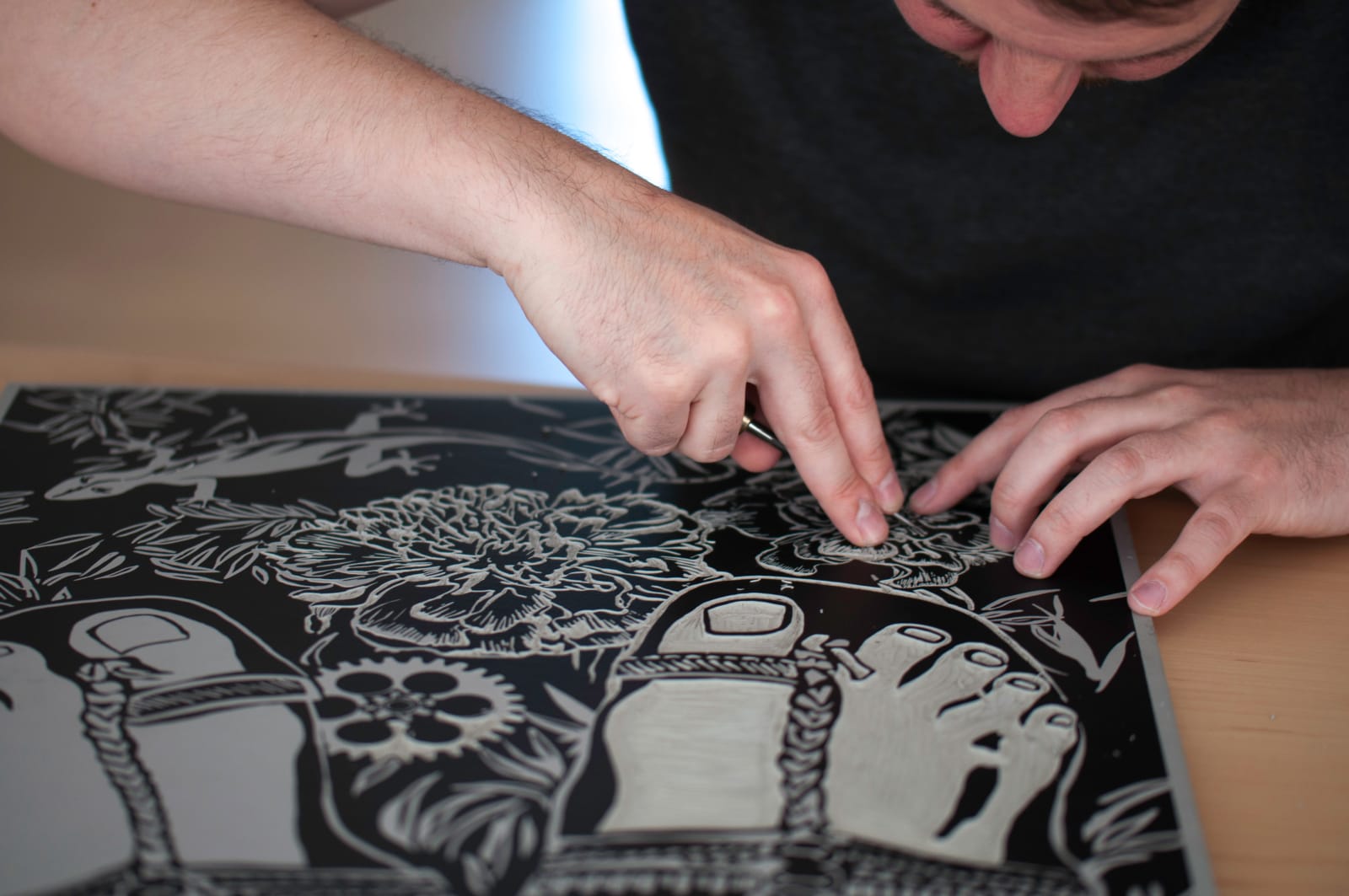Chitra Ganesh
BFK Rives Tan, 280gsm
(51.1 x 41 cm)
Further images
Literature
Chitra Ganesh has completed with Durham Press a new portfolio of twenty-seven relief prints, Sultana’s Dream. Inspired by Rokeya Sakhawat Hossain’s early twentieth-century story of the same title, the prints—all black linocuts on tan paper—both illustrate elements of the text and use its imagery and themes to explore urgent topics of the political present.
Hossain’s 1905 short story begins in reverie: “One evening I was lounging in an easy chair in my bedroom and think-ing lazily of the condition of Indian womanhood.” The narrator soon is led on an oneiric stroll through Ladyland, a utopian matriarchy where women have harnessed the power of the sun to live prosperously and efficiently. Education and compassion for refugees are paramount, and men remain indoors, in domestic spaces.
Ganesh literally interprets certain moments from this pioneering work of feminist science fiction: the opening scene in the easy chair, for example, or a military battle won by wielding an inventive solar weapon. Other images describe and build upon Ladyland’s architecture and environment, further elucidating the vivid atmosphere that Hossain created.
Far from merely illustration, however, the portfolio, in the artist’s words, “connects with problems shaping twenty-first-century life: apocalyptic environmental disaster, the disturbing persistence of gender-based inequality, the power of the wealthy few against the economic struggles of the majority, and ongoing geopolitical conflicts that cause widespread death and suffering.” Like much of Ganesh’s work, Sultana’s Dream engages these subjects through the lens of history, literature, and mythology not only to examine the relationship between imagined and lived worlds but also to consider how utopian fantasies might be realized.
The prints are available as a boxed portfolio, which includes a booklet with an introduction by the author, Hossain’s story and a critical essay by Saisha Grayson, a curator at the Smithsonian Museum of American Art. Individual works are also available, though on a limited basis.
“This project is inspired by “Sultana’s Dream,” a utopian text conceived in 1905 by Rokeya Sakhawat Hossain, an early Bengali feminist author and social reformer. Educated thanks to the support of her elite family, Hossain was one of the few Bengali women of her generation writing in English. “Sultana’s Dream” was completed over the course of an afternoon. First published in the Indian Ladies’
Magazine, a women’s literary journal based in Madras, the story appeared ten years before Charlotte Perkins Gilman’s iconic feminist utopian novel Herland. “Sultana’s Dream,” though not as well known, holds a singular position among early feminist science fiction. This series of prints draws on Hossain’s vibrant imagery, translat-ing a narrative written in verse into a visual grammar that connects with problems shaping twenty-first-century life: apocalyptic environmental disaster, the disturb-ing persistence of gender-based inequality, the power of the wealthy few against the economic struggles of the majority, and ongoing geopolitical conflicts that cause widespread death and suffering. Created in print—a medium that is historically foun-dational to the idea of public discourse—these works comment through form and content on this fraught moment in the world, demonstrating the enduring relevance of feminist utopian imaginaries in offering an invaluable means of envisioning a more just future.” – Chitra Ganesh







